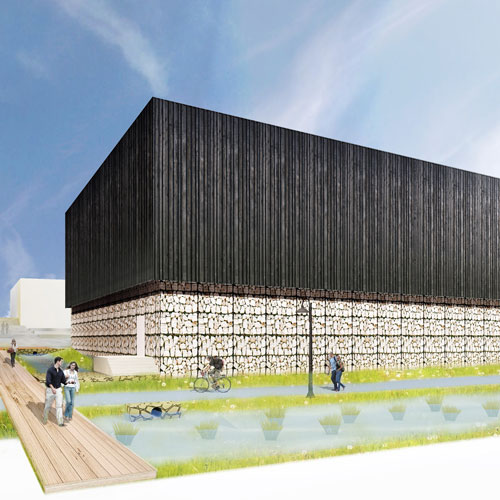When Jeff Matthews joined PANDORA Jewelry in 2010, some thought that the jewelry company was nothing more than a fad. Founded in the early 1980s, the Danish outfit struck gold with the introduction of its signature charm bracelets in 2000, which were soon brought to the United States in 2003. Popularity was still growing when Matthews arrived, but would PANDORA be able to sustain that growth on bracelets alone? After taking a look at the company’s financials, Matthews wasn’t worried.
“They were all in Danish krones,” Matthews says with a laugh. “That didn’t make a whole lot of sense to me, but the percentage increases year-over-year were literally unbelievable.”
They still are, too. PANDORA Americas alone is generating more than $1 billion annually, and since Matthews started, it has opened locations in Canada, Central America, and South America. To this day, PANDORA has developed 592 stores across the Americas, compared with fewer than 100 in 2010. And, it’s not just bracelets fueling the chain’s success.
“The quality of our product is amazing,” Matthews says. “My wife makes fun of me because I’m so passionate about what we sell. Our rings, our earrings—everything we do, the quality and the design is just really nice.”
Not everything was as elegant as the jewelry, however, when Matthews came aboard as the company’s director of store design and construction. His role was not only to oversee the construction of new PANDORA storefronts, but also to remodel existing ones that didn’t reflect the brand’s high standard of quality.
“When I started at PANDORA, there was a design criteria, but there was nothing that was really being enforced,” Matthews says, adding that because of this, some franchise owners ignored the design criteria in favor of alternative looks and materials. “Back then, PANDORA was thought to be a fad, so franchise owners didn’t want to invest a lot of money.”
Because of this, one of Matthews’s goals in his role became to encourage owners to make their stores just as high in quality as the jewelry they displayed. “We believed that PANDORA would become not only a brand, but also a lifestyle,” he says. “We wanted to develop stores to look like that. Our jewelry quality is second to none, but the stores were not reflecting that.”
Because Matthews was working with franchised locations, he had to pitch PANDORA’s design to each franchisee. “I had to sell it,” he says. “But they didn’t want someone to come in and tell them what to do. Their sales were increasing dramatically, and now someone was coming in and telling them they had to build the store again.”
To convince owners that a remodel was best for the brand, Matthews hit the road to visit different locations in person. “I became an on-the-road salesman,” he says. “I had several owners coming back to me afterward—some of the ones that argued with me the most—and say, ‘Thanks, I get it now.’ They really appreciated that a lot of their work had been taken off the table.”
“Back then, PANDORA was thought to be a fad, so franchise owners didn’t want to invest a lot of money. We believed that PANDORA would become not only a brand, but also a lifestyle.”
Matthews says the remodels focus a great deal on lighting as well as a general aesthetic that actually incorporates the look of PANDORA’s popular offerings. Many of the fixtures customers see in any given location, for example, evoke the intricate details of the company’s bracelets. And, PANDORA is becoming known for the ribbon it ties around each of its bags, so it’s interweaving the material’s look into the design of its storefronts.
In 2015, PANDORA rolled out its new Evolution design, so now Matthews is remodeling more than just the stores that didn’t follow the initial design criteria. It’s going smoothly, with an impressive 216 stores already remodeled since the rollout. Efficiency is key, Matthews explains, because he wants to ensure the least amount of impact on a location’s sales during a remodel. Fortunately, PANDORA has alternate revenue streams to supplement that of its stores.
Those streams include the company’s numerous shop-in-shop locations: kiosks overseen by Matthews that do business within other jewelry dealers. They can function with or without PANDORA’s branding, but Matthews says that because branded environments have established themselves as revenue drivers, there’s been a push to populate them with the company’s furniture and fixtures. Currently, PANDORA boasts more than 900 shop-in-shop locations, with 188 remodeled since the rollout of the Evolution design.
Matthews and his team have their work cut out for them as PANDORA marches toward the future. In addition to the 40–60 remodels they’re tasked with each year, they’re also responsible for the construction of new stores, which can surpass more than 70 locations in a given year. As the company continues its expansion into other jewelry categories, Matthews hopes to keep evolving his approach to design.
“We want to make sure we’re accommodating a best-case scenario for the plan of each individual business,” he says. “One of my goals is to get smarter with that, to know even more about the business, and even more about the sales projections per category. That way, we not only give them the right amount of fixtures, but also the right fixtures to sell the product that they need to sell.”
***
Kenstan Lock Company is a leading global manufacturer of high-quality showcase and cabinet locks. Since 1963, Kenstan has manufactured comprehensive lines of locks, each with its own specialized security level for retail, commercial, and industrial use.


